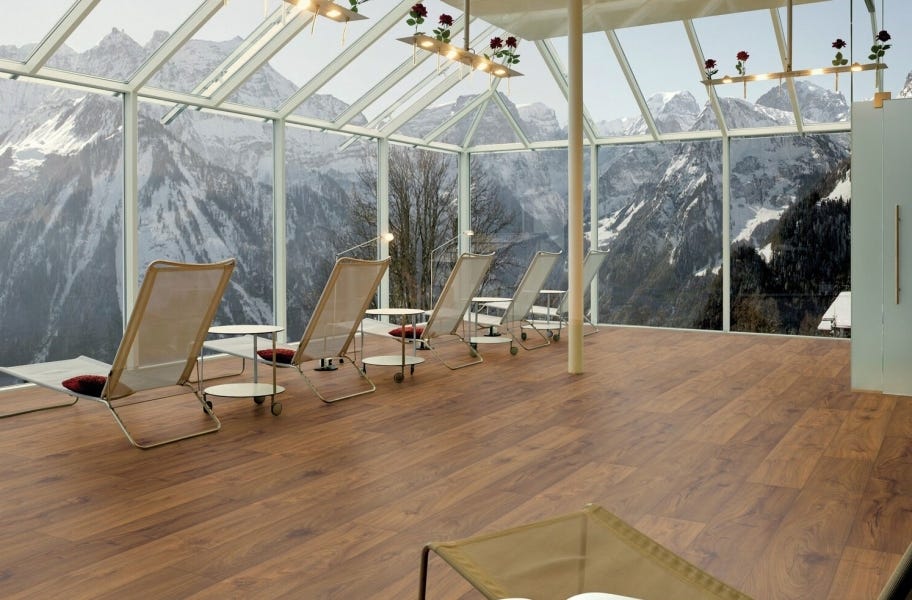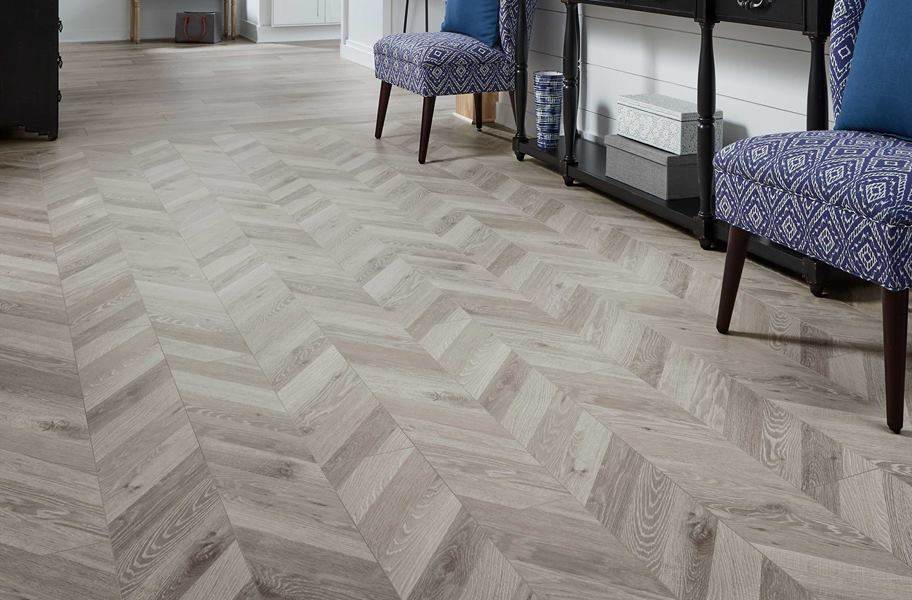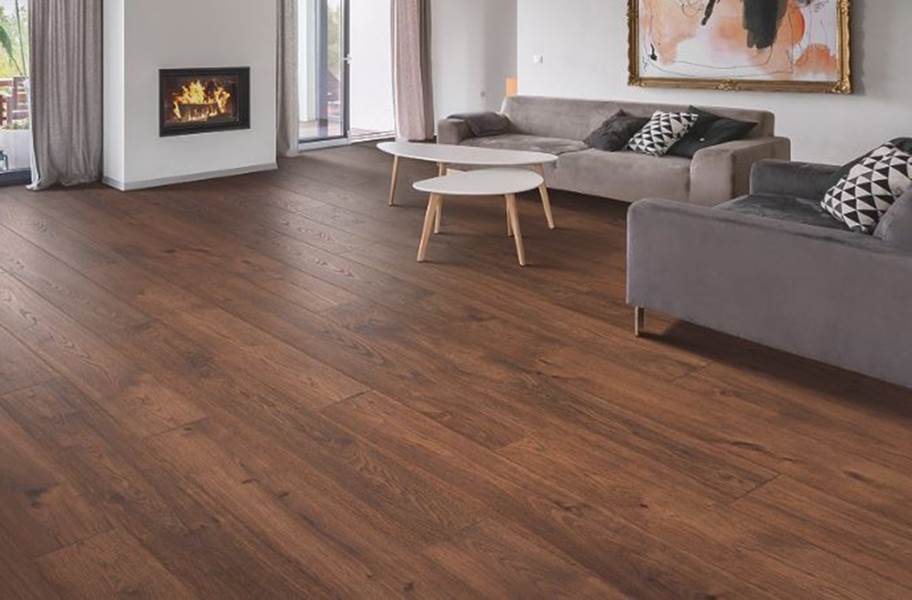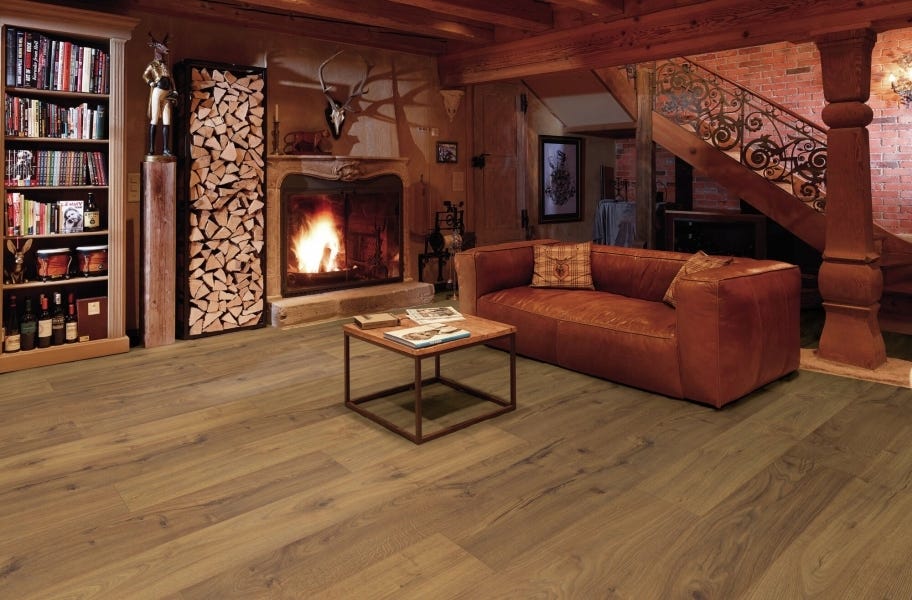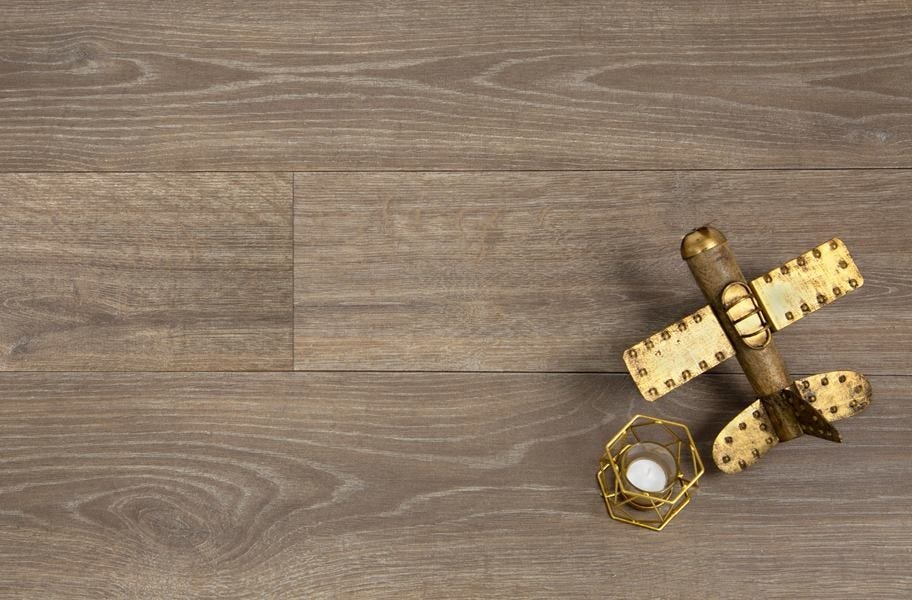


Best Laminate Flooring Options
So you want to update your home with new flooring, and laminate flooring is your top pick. You’re in the right place! Laminate is incredibly popular for its durability, easy installation, and style. But how do you find the best one for you?
Don’t worry! We’ve created this guide to help you find the perfect option.
Get inspired by exploring these top options.
- Best Laminate Flooring Overall: 12mm Mannington Palace Waterproof
- Top Waterproof Laminate Flooring: 12mm Mohawk RevWood Plus Elderwood Laminate
- Best Wide Plank Laminate Flooring: 14mm KronoSwiss Origin Wide Plank Laminate
- Most Stylish Laminate Flooring: 12mm Hillside Hickory Waterproof Laminate
- Best Laminate Flooring For Dogs: 10mm Antique Craft Waterproof Laminate
How to Choose Laminate Flooring
Before you dive into the top-performing products, it’s important to know what to look for when shopping for laminate flooring. Here are a few crucial considerations.
Durability
All laminate comes with an abrasion class rating, also known as the AC rating. This rating measures the durability of the flooring. When you want a durable floor, look for a rating of AC4 or AC5. Flooring with this rating is durable enough for all residential use, and even commercial spaces.
DIY Friendliness
Everyone loves DIY projects these days. Most laminate planks are designed with interlocking edges that click together with ease. No need to hire an installer. You can do it all yourself, and save some money.
Style
Laminate is best known for its highly realistic wood looks and textures. It comes in the most popular wood-look shades and textures, so you’re certain to find a look that matches your home.
Waterproof Design
In a busy home with pets or kids, waterproof flooring can be a lifesaver. You can now find genuine waterproof laminate that is ideal for bathrooms, basements, and more.
Budget
Price is one of the biggest considerations for your new floor, no matter what features or styles you’re looking for. Fortunately for you, laminate is one of the most affordable wood-look flooring options on the market.
Best Laminate Flooring Overall
12mm Mannington Palace Waterproof
This beautiful waterproof flooring can handle the wear of a busy life while providing an exceptional wood appearance. It’s durable enough to install in the basement and beautiful to display in your kitchen. Additionally, the white oak planks are embossed with a highly realistic wood texture and a protective layer that resists scratches and stains.
Features:
- White oak look and feel
- 25-year warranty
- Indentation resistant
- Great for homes with children or pets
Best Waterproof Laminate Flooring
12mm Mohawk RevWood Plus ElderWood Laminate
With these planks, you get an incredibly durable floor in a variety of beautiful finishes. It’s perfect for busy households with pets and children. If you want a realistic wood look, you’ll love this flooring. Mohawk RevWood laminate planks are embossed with a realistic wood texture that matches the grain of the wood for an authentic look and feel.
Finished with a Hydroseal protective layer, each plank repels water from the core and prevents swelling from moisture and spills. Plus, the RevWood technology ensures that this flooring performs in any room, at any grade, and is backed by a lifetime residential warranty.
Features:
- Pressed bevel edging
- All pet warranty
- Great for homes with kids or pets
- Authentic hardwood beauty
Best Wide Plank Laminate Flooring
14mm KronoSwiss Origin Wide Plank Laminate
This flooring features oversized planks with a high durability rating and 72-Hour water protection, all in a beautiful selection of colors to match any decor. KronoSwiss comes with superior water resistance. It offers a high-density core, AquaPearl locking system, and a robust finish that is both UV stable and easy to clean.
Features:
Water-resistant finish
Scratch-resistant wear-layer
Highest abrasion resistance rating
Easy to clean and maintain
Best Stylish Laminate Flooring
12mm Hillside Hickory Waterproof Laminate
When you want some extra style, this is your best option. Hillside Hickory flooring captures the essence of a reclaimed wood look and feel in the durability of a laminate. SpillShield technology offers a 72-hour spill protection warranty, so you can spend less time on maintenance and more time enjoying your floor.
Features:
- Natural wood visuals
- Waterproof technology
- Indentation resistant
- 25-year warranty
Best Laminate Flooring for Dogs
10mm Antique Craft Waterproof Laminate
When it comes to pet-friendly flooring, this is your best bet. Antique Craft planks are a beautiful and revolutionary new flooring designed for everyday life, including life with your pets. With the registered embossing on the surface, you get a realistic wood look and feel. Best of all, it’s backed by an all pet protection warranty.
This water-resistant flooring features a tight interlock and a waterproof surface. That means any accident or spill is easy to clean up. It’s perfect if you have a busy family, large energetic pets, or just want to update your look. It protects against scratches, subfloor moisture, and water damage.
Features:
- Waterproof
- Perfect for busy families with children and pets
- All pet warranty
- Distinctive knots and grain patterns
Conclusion
And there you have it – the best of the best! You can choose from the trendiest style, the highest durability, and the most waterproof designs. Now that you’ve got some inspiration, are you ready to shop for your new floor?



